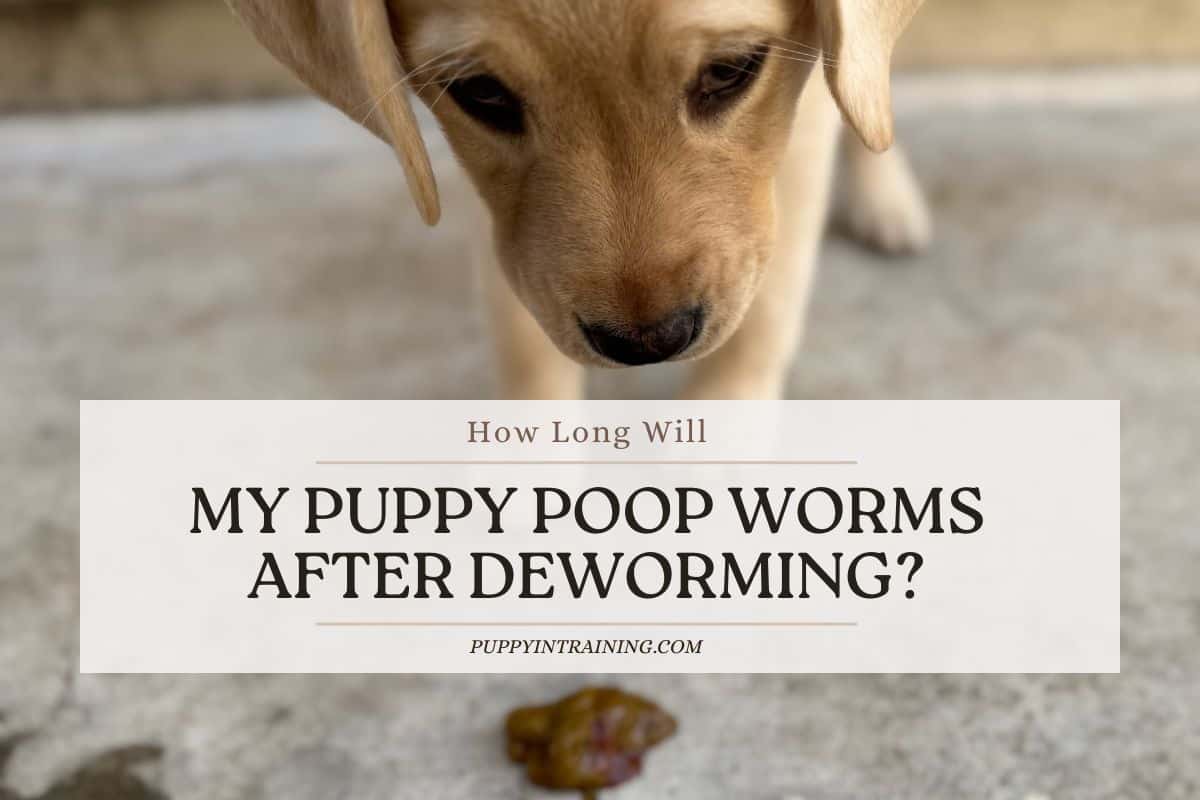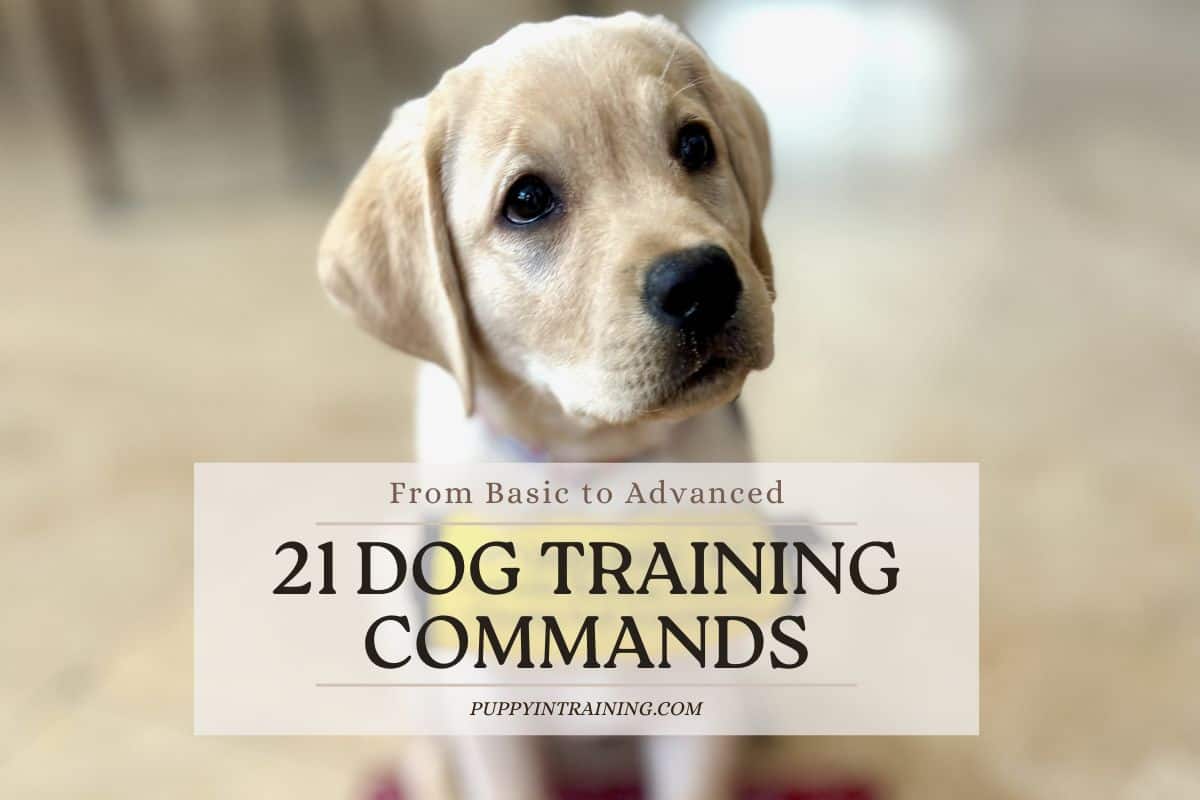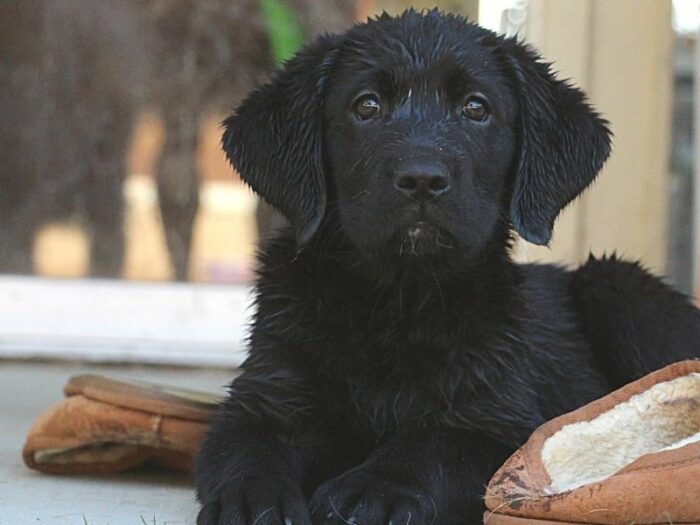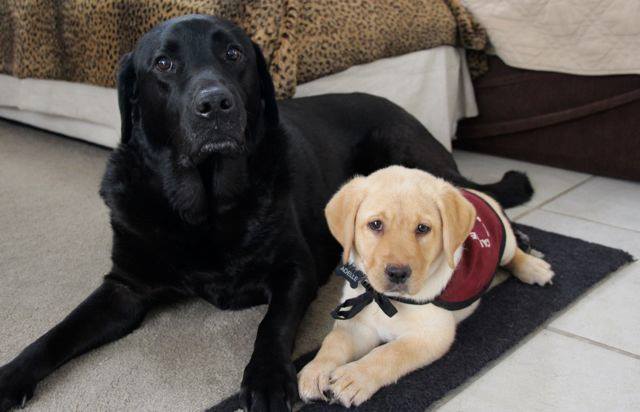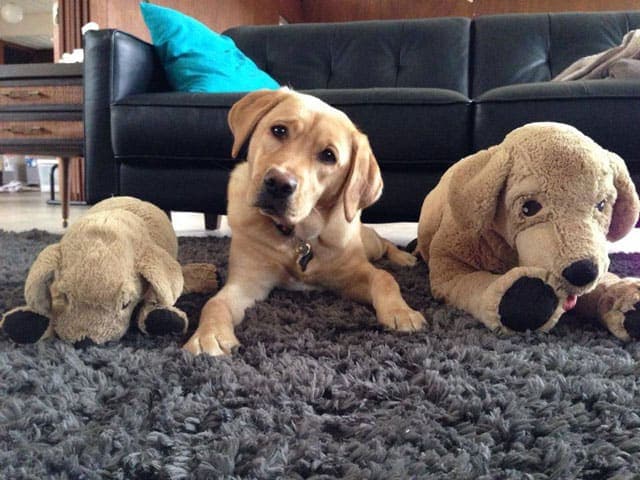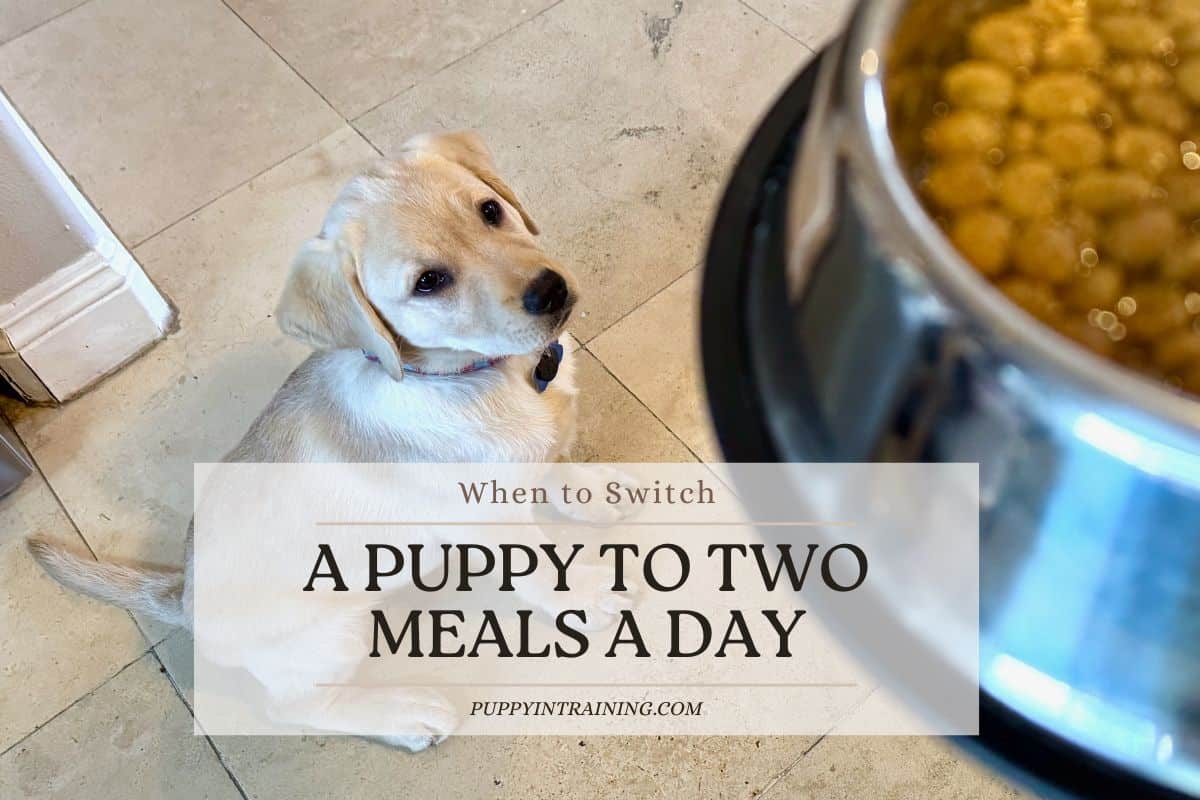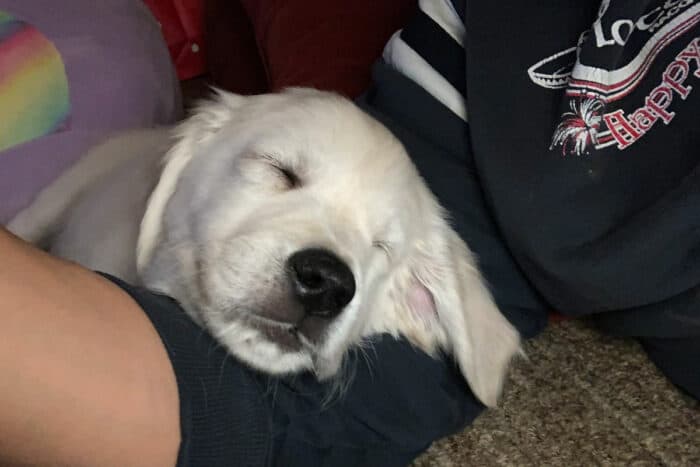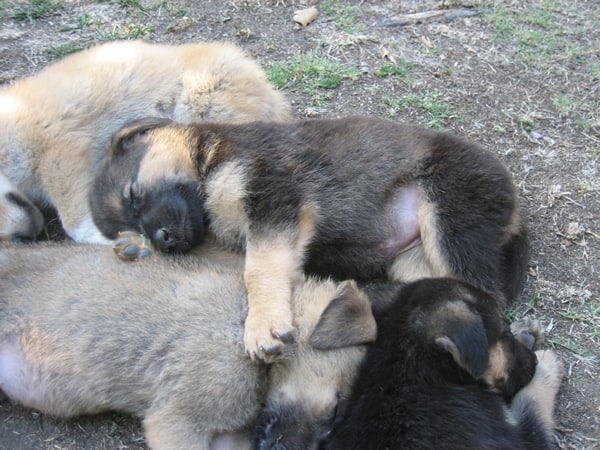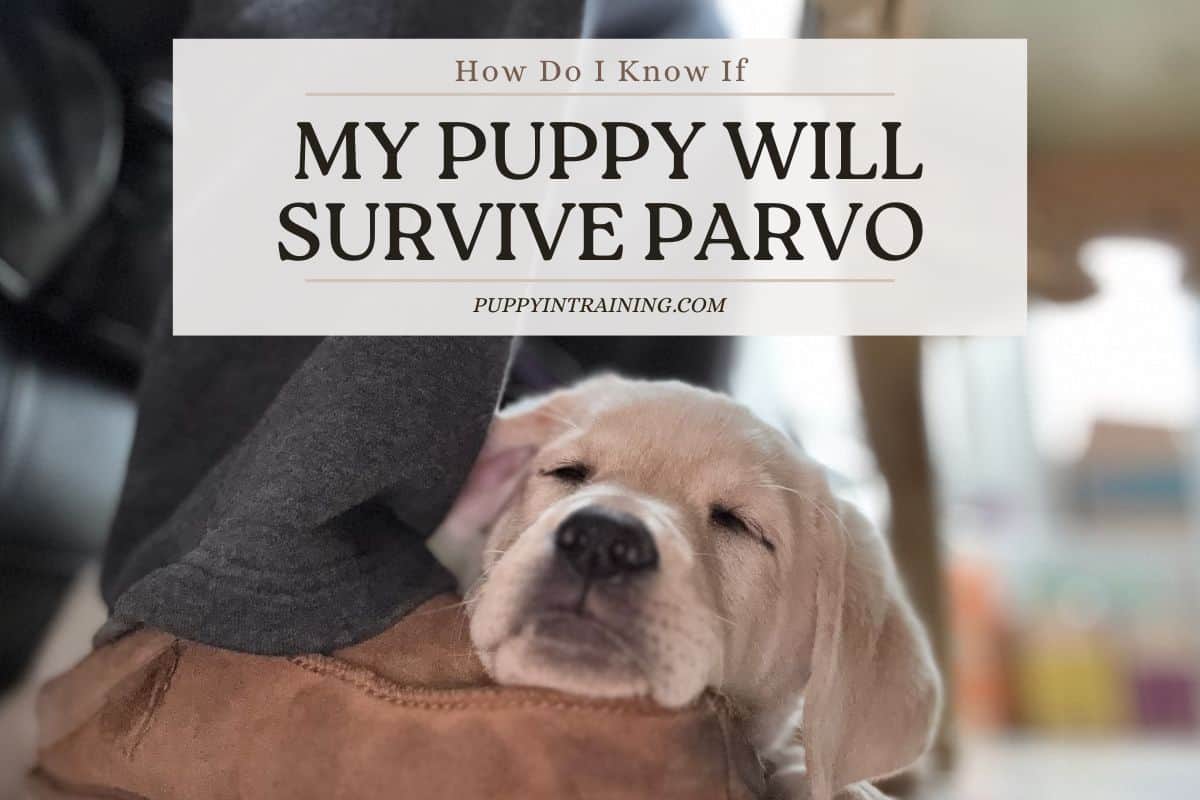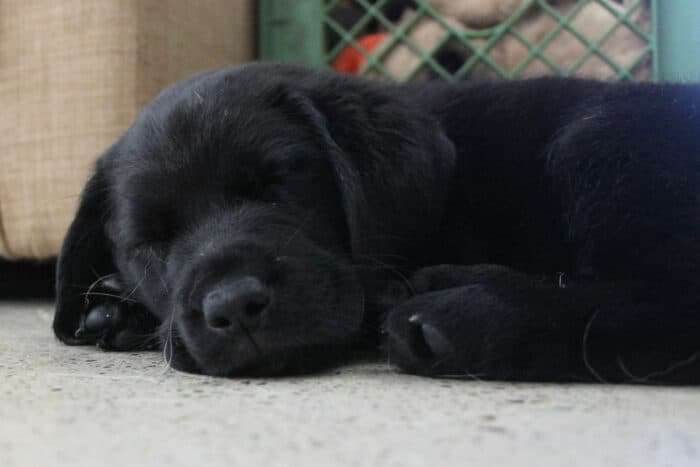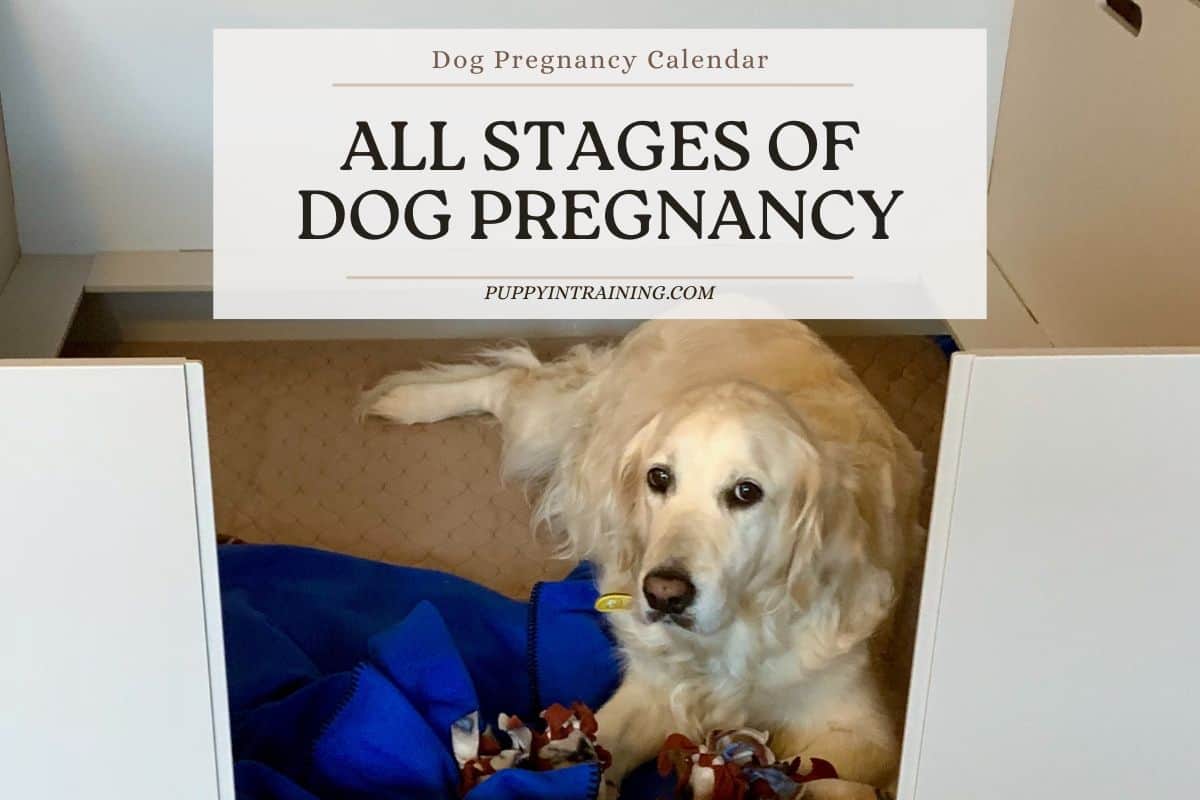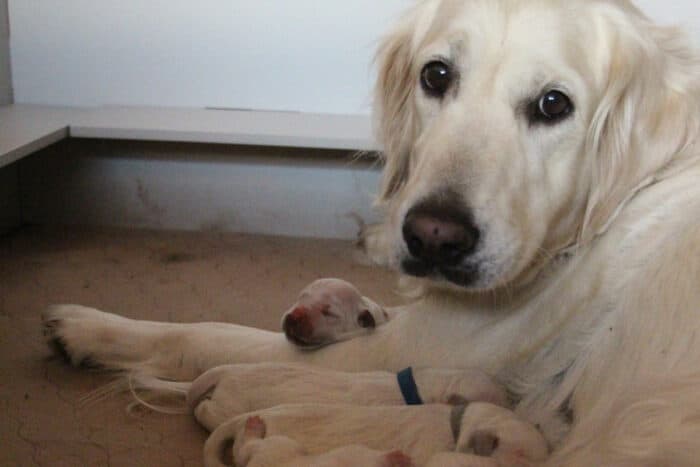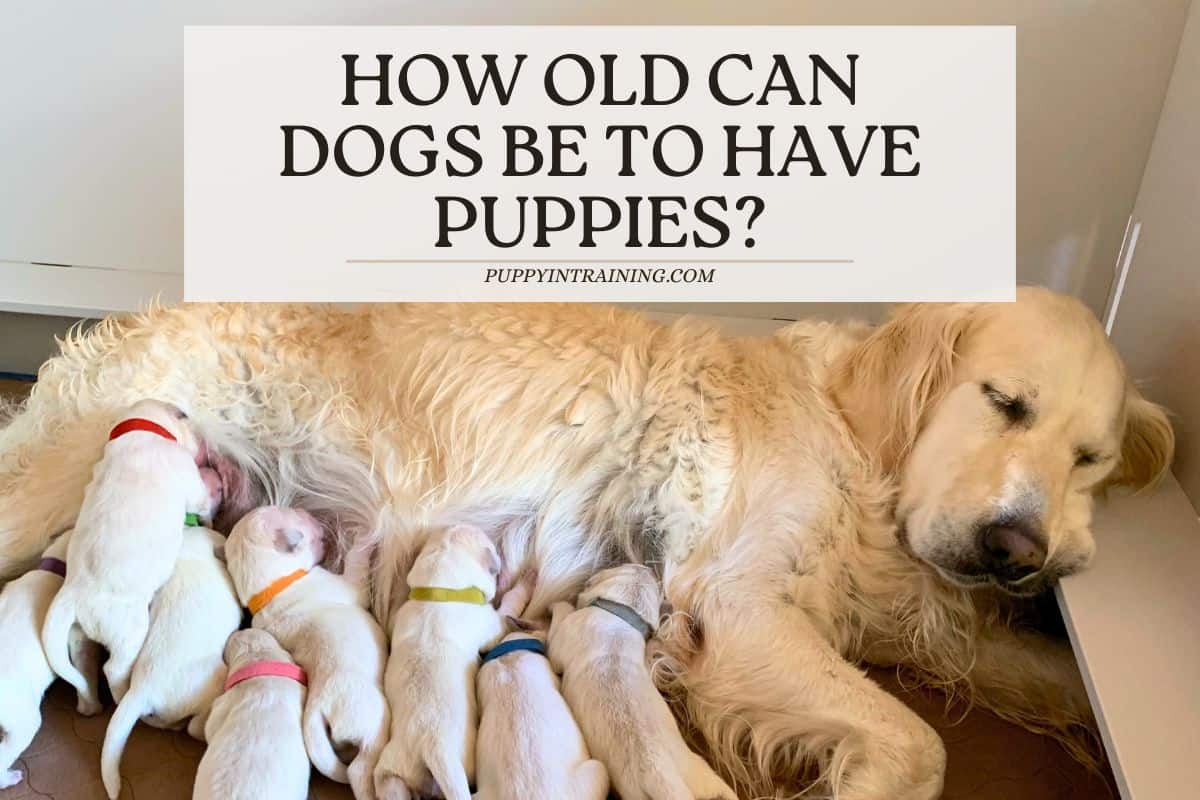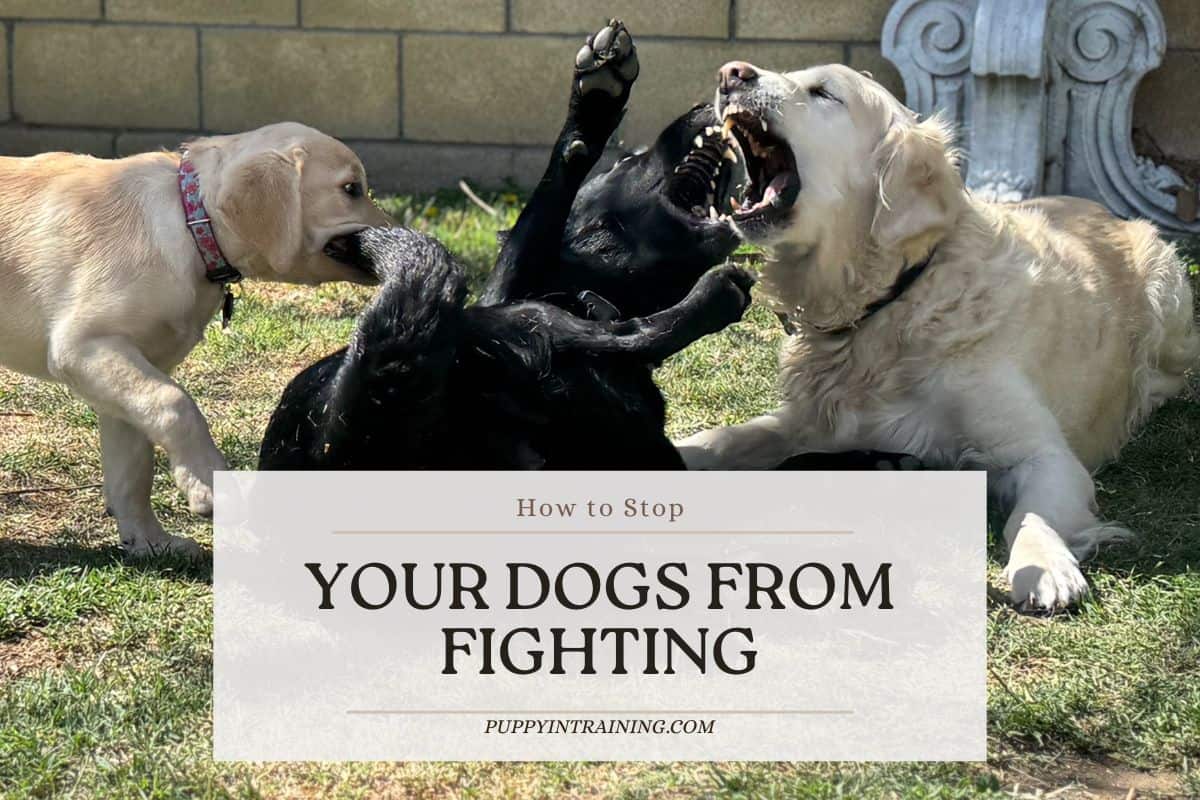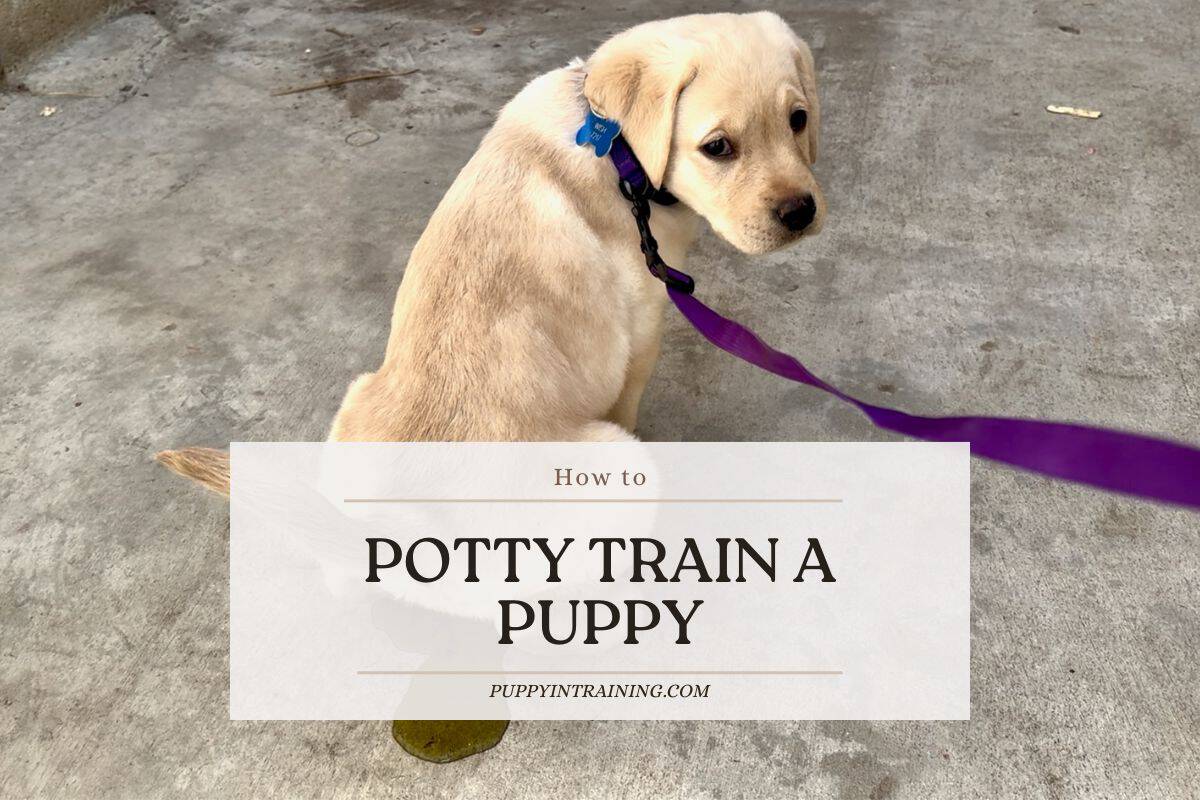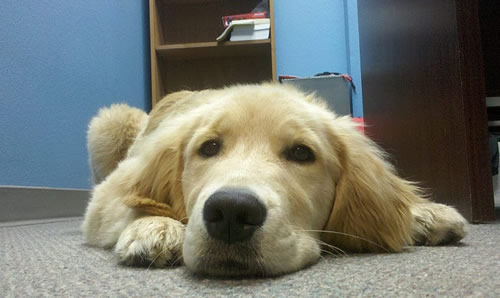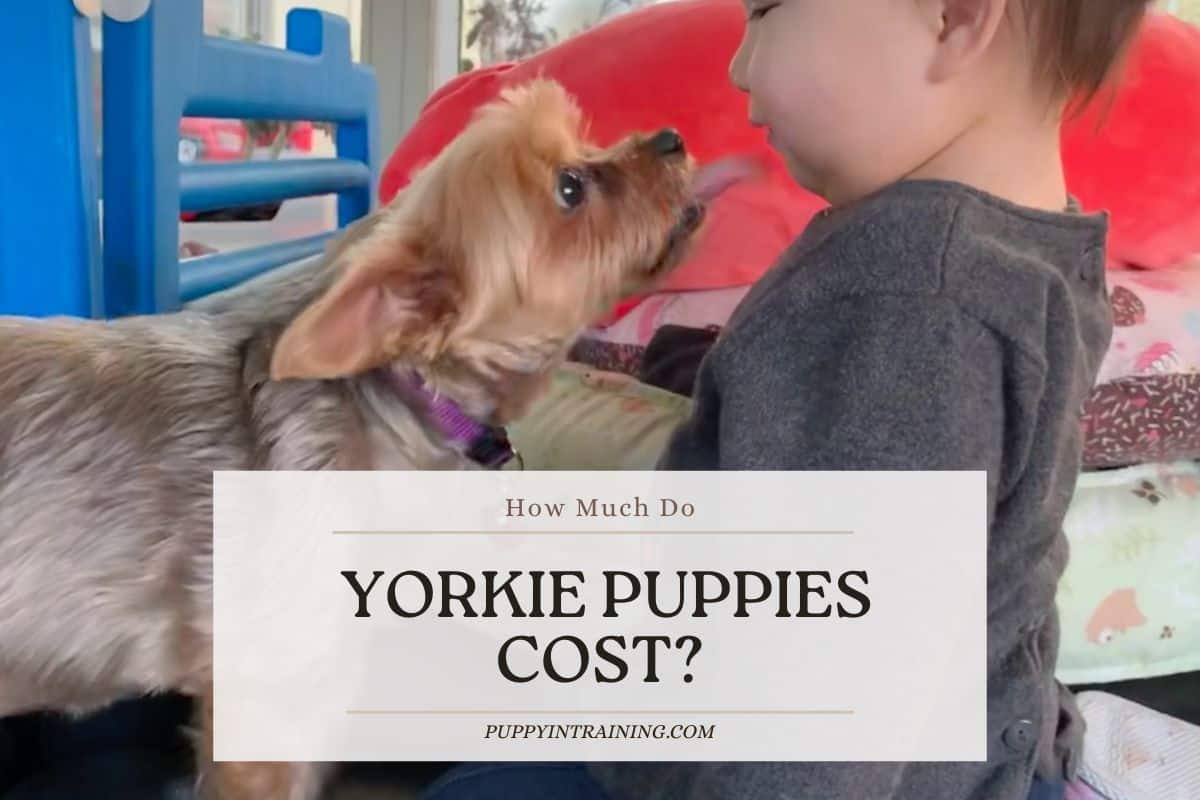This post may contain affiliate links. We may earn money or products from the companies mentioned in this post.
Keeping your fur baby healthy means fewer visits to the vet. Deworming is crucial if you want to keep your puppy parasite-free.
Fortunately, deworming is a relatively hassle-free process that can be accomplished with just a few steps.

Once you have dewormed your puppy, you’ll probably want to know how long your dog will continue to poop worms. Puppies will typically poop worms for 2-3 days after they have been dewormed.
OUR EXPERIENCE: Linus had worms when we brought him home. I can confirm that he stopped pooping worms about 2-3 days after taking deworming medication.
However, you may still find some worms in your puppy’s excrement up to a week after deworming. This is completely normal and should not alarm you.
Worms are a common problem for dogs at any stage of life. As a pet parent, it’s important to understand just how to deal with these pesky parasites. To find out everything you need to know about deworming your puppy, keep reading!
Please contact your veterinarian if your puppy has worms or if you plan on deworming your puppy. This site is for entertainment purposes only and you should consult with your veterinarian if you have any health-related concerns about your dog or puppy.
How Do Puppies Get Worms?
Puppies are not just adorable, they are also curious. This means there are plenty of ways in which your fur baby can become infected with worms.
Transmission From Mom To Puppy
It is fairly common for worms to be transmitted from mothers to their puppies. Parasites like roundworms can be transmitted while puppies are still in utero.
They can also be transmitted through a mother’s milk to her puppies. While your puppy is nursing, it can easily contract worms if its mother is infected.
Ingesting Worm Eggs Or Worm Larvae
Puppies like to taste and lick everything. This is just how dogs explore the world around them. Unfortunately, this also means they ingest plenty of dirt.
Grass, soil, and debris are all possible carriers of worm eggs and larvae. When an infected animal poops, it can leave parasite eggs on various surfaces.
QUICK TIP: This is just one reason why it’s so important to pick up your pup’s poop (lessen the spread of parasites). If you’re looking for good poop bags our favorite are the Earth Rated Poop bags.
Once your puppy comes into contact with these surfaces, it may ingest the worm larvae or eggs and become infected.
Transmission From Other Animals
Parasites spread easily from one animal to the next. If you have multiple pets in your household, it is important to ensure all of them are dewormed regularly.
Worm eggs can spread from one pet to another through feces, contaminated food, or contaminated surfaces. It is important to keep your pup from ingesting excrement from other animals. This is the easiest way your dog can become infected.
Fleas
Fleas can carry worm larvae. This means that if your puppy gets infested with fleas, they are also at risk for a worm infestation.
Keep a lookout for fleas and have a regular grooming schedule to ensure that your puppy is protected against these pests.
QUICK TIP: All of our guide dog puppies are on flea medication. We’ve used topical and ingestible flea meds. We currently give our pups Nexgard Chewables to keep the fleas and ticks away.
Fur
Puppies like to groom themselves. However, in the process of licking their fur, they may ingest parasite eggs.
As long as your puppy is interacting with the environment, they are bound to come into contact with dirt. It’s therefore important to keep your pooch bathed and clean. This will minimize the risk of your pup carrying worm eggs or larvae on their coat.
QUICK RECOMMENDATION: We bathe our puppies about once a month using Burt’s Bees Puppy Shampoo.
Signs That Your Puppy Has Worms
Catching a worm infestation early on can save you lots of trouble down the road. Untreated infections can lead to health complications so it is vital to keep a lookout for the following warning signs.
Worms In Your Puppy’s Poop
When your puppy has worms, you are likely to see them in her excrement. When parasites accumulate in the intestines, some of them will be passed when your dog has a bowel movement.
It is also not uncommon to find worms in your puppy’s vomit if they are infected. Pooping or vomiting worms is one of the key indicators that your puppy is infected. However, not all parasites are visible to the naked eye.
Bloating
Bloating is a common symptom found in puppies infected with worms. Bloating is especially common in nursing puppies that have contracted parasites from their mother.
Weight Loss
Weight loss and stunted growth are symptoms that could point to a parasitic infection. If your puppy is not growing as expected or suddenly starts to lose weight, it’s important to have them checked for worms.
Parasites will interfere with your pup’s ability to absorb nutrients from their food, resulting in weight loss.
Lethargy and Weakness
Puppies are naturally playful and curious. If you notice that your pooch seems lethargic and weak, you may need to have them checked for worms.
Constant Hunger
If your pup does not seem to get full, there may be more to it than a voracious appetite. Dogs with worm infestations are constantly hungry and they will eat more than usual.
Despite this increased appetite, you will notice that your puppy does not put on weight as expected. This is another warning sign that your pup may need deworming.
Asymptomatic
Not all worm infestations will manifest themselves obviously. Your pup may be completely asymptomatic and still have parasites.
This is why it’s important to stick to a regular deworming schedule as recommended by your vet, regardless of whether you see symptoms of infection or not.
What Types Of Worms Are Found In Puppies
Different types of worms could infest your puppy. Some of these parasites can be fatal, so it is important to understand the different types of parasitic worms.
Roundworms
Roundworms are common in puppies. This type of worm is transmitted from mother to puppy in the womb or during nursing.
Some common signs that your puppy has a roundworm infestation are bloating, weight loss, and diarrhea.
Hookworms
Hookworms are small parasites that can nonetheless cause a lot of damage to your puppy’s health. These parasites attach to your puppy’s small intestine and absorb blood and nutrients from the body.
Hookworms can cause anemia, weakness, and loss of appetite. In severe cases, hookworm infestation can be fatal, so early treatment is essential.
Tapeworms
Fleas are the most common transmitters of tapeworms. In most cases, a tapeworm infection will be asymptomatic. However, you may notice this type of worm in your dog’s poop.
Whipworms
Whipworms are small, threadlike parasites. They typically infest the large intestines. If your puppy has whipworms, some of the symptoms include malnutrition and anemia. You may also notice that your dog’s poop is bloody.
Whipworms can only be detected microscopically so your vet will need stool samples to diagnose this type of worm. If left untreated, whipworms can be fatal, so speedy treatment is important.
Coccidia
Coccidia worms are common in puppies from puppy mills and pet stores. They rarely affect adult dogs so this type of parasite is mostly a problem for puppies.
Symptoms of coccidia infestations include dehydration and bloody diarrhea.
We brought Linus home from the animal shelter at around 8-10 weeks old. He was lethargic, dehydrated, and anemic. Among other ailments, he was also diagnosed with Coccidia.
How To Deworm Your Puppy
There is no need to fret if you find that your puppy’s poo has worms or if your dog is exhibiting other symptoms of worm infestation.
There are plenty of medications available for deworming, and your vet will recommend the best medication for your puppy.
Most dewormers come in the form of tasty tablets to make it easy for your puppy to take them. However, if you have trouble getting your puppy to take the tablet, you can hide it in their treats or food.
Deworming medications are typically broad-spectrum and will be effective against different types of parasitic worms. However, the appropriate dosage for your dog will depend on their body weight, so always consult your vet.
It is recommended that you deworm from the age of two weeks, and every two weeks after that until your dog is three months old.
At this point, you can scale back to deworming monthly until your puppy the six-month mark. After six months, it is recommended that you continue deworming your dog every three months.
Since parasites can be transmitted from mother to puppy, always ensure that you deworm the mother as well. This will ensure that your pup does not get infected through nursing or contact with its mother.
Always remember that deworming only gets rid of existing worms and does not prevent reinfection.
What To Expect After Deworming Your Puppy?
Most deworming treatments work in two to six hours after administration. Some medications will dissolve the worms while some will paralyze them.
Paralyzed worms pass through the intestinal tract and are passed out in your puppy’s poop. This is why you will notice that your puppy poops worms after deworming. This may continue for three days or even longer.
Be careful to dispose of your dog’s excrement properly to get rid of any worm eggs and larvae. Always wash your hands thoroughly after cleaning up dog poop.
Side Effects Of Deworming Your Puppy
Most deworming medications are safe for your puppy. However, your pooch may experience some side effects after deworming.
Bloody stool
If your puppy has bloody stool after deworming, this condition is no cause for alarm. This often happens as the worms detach from the intestines. However, if the condition persists for more than three days, consult your vet.
Diarrhea
Puppies may experience diarrhea after deworming. This is a result of the inflammation caused by worms unlatching from the intestines. As long as diarrhea doesn’t last for more than a couple of days, your pup should be just fine.
Lethargy
Your pooch may not be its usual playful self after deworming. This is due to the discomfort caused by diarrhea. Make sure you give your pup plenty of water during this time to prevent dehydration.
How To Prevent Worms In Puppies
Worms are part of the doggy experience and at some point, your pup is going to pick up these parasites. However, there are still measures you can take to minimize the risk of infection.
Pick Up After Your Dog
Your puppy will pass worms with their poo after deworming. This happens for up to 3 days after the deworming process.
If you do not dispose of the excrement properly, the eggs in the poop can cause reinfection if your pup comes into contact with them.
Picking up after your dog is not just good for the environment, but it will also help minimize the risk of reinfection.
Dog poo is the biggest carrier of worms and worm eggs, so disposing of it properly is crucial. Potty training your pup will also ensure that dog excrement does not end up in the wrong place.
QUICK RECOMMENDATION: When we’re out and about we use Earth Rated Dog Poop Bags. When we’re at home we use our handy dandy pooper scooper to scoop the poop.
Wash Your Hands After Handling Your Pets
Your puppy can carry parasite eggs in its fur. If you handle your pets and then prepare their food without washing your hands in between, the food can become contaminated. This will lead to constant worm reinfections for your puppy.
Clean hands mean a lower risk of worm eggs getting into your fur baby’s food.
Treat Your Puppy’s Fleas
Fleas carry worm eggs and larvae and can easily cause parasitic infections. To keep your puppy safe, make sure you treat your pup and any other pets in the house for fleas.
Regular flea treatments ensure that your puppy will not get infected by worms that are spread by fleas. Also, keep a household flea spray handy to get rid of any fleas in your home.
We’ve used several flea medications to keep our home free of fleas including:
Ensure That Dog Food And Water Are Clean
Dogs ingest worms from contaminated food and water. Clean your puppy’s food and water bowls regularly. Any raw foods such as vegetables should be thoroughly washed before being fed to your pup.
QUICK TIP: It’s important to keep your dog bowls clean. We recommend stainless steel dog bowls as they are easiest to keep clean.
Deworm Your Pets Regularly
Sticking to a regular deworming schedule is important in keeping your puppy healthy. Don’t forget to deworm other pets in the house as well to prevent cross-infection.
Parasites can easily spread from one animal to another, so it is important to have a routine deworming schedule for all of your pets.
Frequently Asked Questions
What Should I Expect After Deworming A Puppy?
After deworming your puppy, expect your puppy to poop worms. This is because the deworming medication paralyzes the worms, which then pass from the intestines into the feces.
You should expect your dog to experience some diarrhea after deworming. This should last for a day or two as the worms get passed out in poop.
How Long Does It Take For A Dewormer To Work In Puppies?
A dewormer will start to work between two and six hours after administration. Deworming medications work in different ways, depending on the type you purchase. Some dewormers will dissolve the worms while others will paralyze them.
When the worms are paralyzed, they need to be passed out of the body, so they will be excreted in your puppy’s poop. This is normal.
How Long Till Tapeworms Are Gone After Deworming?
Tapeworms will be gone within 24 hours after deworming. You may choose a tablet or injectable dewormer. After the process is complete, tapeworms are typically dissolved in the intestines so you will not see any in your puppy’s poop.
Tapeworms are mostly spread by fleas. It is important to keep your puppy free of fleas to minimize the risk of tapeworm infections.
Is It Safe To Deworm A Puppy Twice?
Yes, it is safe to deworm a puppy twice. Puppies are especially vulnerable to parasitic infections. This means that they need to be dewormed frequently to keep them healthy.
You should deworm your puppy at two-week intervals starting from the age of two weeks. Once the puppy is three months old, you should deworm it once a month until the puppy gets to six months of age. After this point, it is recommended that you deworm your dog every three months moving forward.
Can A Puppy Eat After Deworming?
Yes, after deworming your puppy can eat as usual. There are no particular dietary restrictions required after deworming. However, you may notice that your dog may have a reduced appetite. This is normal after deworming.
Make sure your puppy eats some food and gets sufficient water to prevent dehydration.
QUICK RECOMMENDATION: We currently feed our guide dog puppies Purina Pro Plan Puppy Large Breed.
Is Deworming A Puppy Necessary?
Yes, deworming a puppy is necessary. Puppies are at high risk for worm infestations. Puppies can contract worms from the mother while in the womb or nursing. This means that even newborn puppies may have worms.
It is important to start deworming your puppy from the age of two weeks and follow up with a regular deworming schedule. Parasites can cause serious health complications in puppies and some cases may even be fatal.
Can I Get Worms From My Puppy?
Yes, you can get worms from your puppy. Worms that infect puppies can also infect humans. This means that you need to be careful about hygiene and disposing of your pup’s poop. Worm eggs and larvae in dog poop can stay on grass and soil for extended periods.
Eating contaminated food or water can also lead to infection. It is especially important to keep small children from ingesting anything that may be contaminated with a dog’s fecal matter.
Conclusion
Puppies are adorable, cute, and a joy to have around. However, your pup is at its most delicate when young, so this means it needs extra care. Deworming is one way to make sure that your pup stays happy and healthy.
With the right medication and deworming schedule, worms will not pose a serious health risk for your pooch. Be sure to consult your vet for the appropriate dosage and deworming schedule for your dog.
Has your puppy ever had worms?
Did you have to get him dewormed?
Tell us about your experiences in the comment section below.
Save To Pinterest

UPDATE: This post was originally published on June 22nd, 2021. We periodically update blog posts with new experiences and information to keep them as relevant as possible.
Top Picks For Our Puppies
- BEST DOG CHEW
We Like: Beef Collagen Sticks – All of our pups love to bite, nip, and chew. We love using Collagen Sticks to help divert these unwanted behaviors. - BEST PUPPY TOY
We Like: Calmeroos Puppy Toy w/ Heartbeat and Heat Packs – Perfect for new puppies. Helps ease anxiety in their new home. - BEST DOG TREATS
We Like: Crazy Dog Train-Me Treats – We use these as our high-value treats for our guide dog puppies. - BEST FRESH DOG FOOD
We Like: The Farmer’s Dog – A couple months ago we started feeding Raven fresh dog food and she loves it! Get 50% off your first order of The Farmer’s Dog.
Check out more of our favorites on our New Puppy Checklist.
